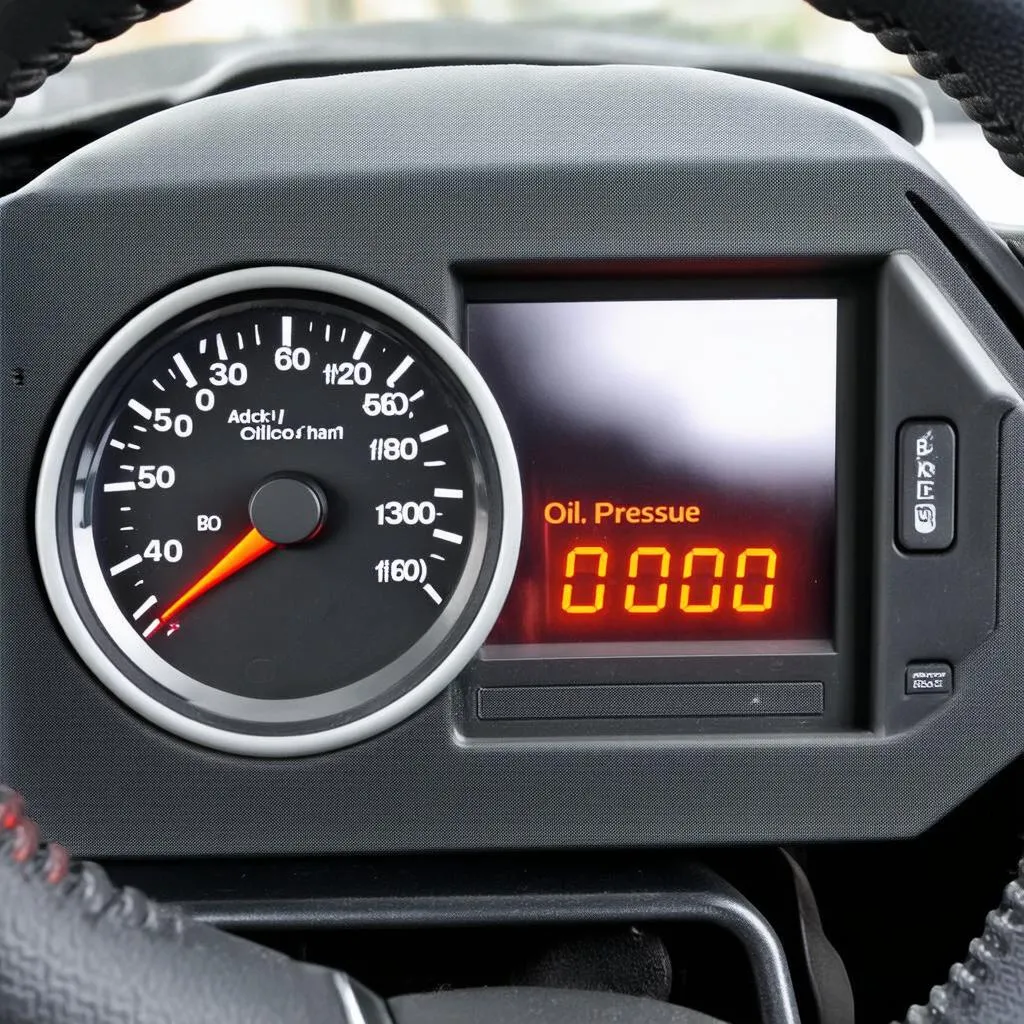Understanding VCDS Engine Run-In Oil Pressure: A Comprehensive Guide
“What goes up must come down.” We’ve all heard this saying, but have you ever considered its application in the realm of car diagnostics? Today, we’ll explore the fascinating world of VCDS engine run-in oil pressure, a topic that’s often shrouded in mystery for even seasoned mechanics.
Why Is VCDS Engine Run-In Oil Pressure So Important?
Oil pressure is the lifeblood of your engine. Just as a human needs a healthy heart to circulate blood, an engine relies on consistent oil pressure to lubricate its moving parts, prevent wear and tear, and maintain optimal performance. The VCDS tool, short for “VAG-COM Diagnostic System,” is a valuable diagnostic tool for Volkswagen, Audi, Skoda, and Seat vehicles. It allows you to access various engine parameters, including oil pressure. Understanding engine run-in oil pressure is crucial for:
- Early Detection of Issues: Low oil pressure can be a sign of serious engine problems. By monitoring this parameter, you can catch issues before they escalate.
- Optimal Performance: Maintaining proper oil pressure ensures smooth engine operation and prevents premature engine wear.
- Understanding Your Vehicle: Knowing the normal oil pressure readings for your engine helps you understand its health and identify any deviations from the norm.
Decoding VCDS Engine Run-In Oil Pressure Readings: What Do They Mean?
Let’s get into the nitty-gritty. When you use VCDS to check your engine’s oil pressure during the run-in phase, you’re looking for specific values that indicate how well the engine is lubricated. These values vary depending on the engine model and operating conditions.
What is Engine Run-in?
Engine run-in, also known as engine break-in, is the initial period after a new engine is assembled or rebuilt. During this phase, the engine components are carefully “wearing in” to ensure optimal performance and longevity.
Oil Pressure and Engine Run-in:
During engine run-in, oil pressure readings are crucial for monitoring the engine’s health and ensuring proper lubrication. You’ll want to observe the following:
- Initial Oil Pressure: The initial oil pressure reading should be within the manufacturer’s specified range for your engine. A low initial oil pressure could indicate a problem with the oil pump or other components.
- Oil Pressure Stability: The oil pressure should stabilize after a few minutes of engine operation. Fluctuations or sudden drops in oil pressure can signal a problem.
- Oil Pressure Under Load: The oil pressure should increase under load, such as when accelerating or climbing hills. This indicates that the oil pump is working properly.
Interpreting VCDS Engine Run-In Oil Pressure Readings: A Case Study
Let’s imagine you’re a mechanic working on a 2012 Audi A4 with a 2.0L TFSI engine. You’re using VCDS to monitor oil pressure during the engine run-in phase.
- Initial Oil Pressure: The initial oil pressure reading is 4.5 bar, which is within the specified range for this engine.
- Oil Pressure Stability: The oil pressure stabilizes at 3.5 bar after about 5 minutes of idle.
- Oil Pressure Under Load: When you rev the engine to 3000 RPM, the oil pressure increases to 5.0 bar.
These readings indicate that the engine is properly lubricated and the oil pump is working correctly.
Essential Considerations for Engine Run-In:
- Oil Quality: Always use high-quality oil that meets the manufacturer’s specifications.
- Operating Conditions: During run-in, it’s crucial to avoid extreme operating conditions, such as prolonged high revs or heavy loads.
- Monitoring and Adjustments: Regularly check your engine’s oil pressure and make any necessary adjustments to ensure proper lubrication.
Troubleshooting Low Oil Pressure Readings:
If you’re experiencing low oil pressure readings during engine run-in, it’s important to investigate the potential causes:
- Oil Pump Failure: The oil pump is responsible for circulating oil throughout the engine. A faulty oil pump can lead to insufficient oil pressure.
- Oil Filter Clogging: A clogged oil filter can restrict oil flow and reduce oil pressure.
- Oil Leak: A leak in the engine oil system can cause a drop in oil pressure.
- Worn Engine Bearings: Worn engine bearings can allow oil to escape, leading to reduced oil pressure.
Frequently Asked Questions:
Q: What is the normal oil pressure for my engine?
A: The normal oil pressure for your engine will vary depending on the engine model and operating conditions. Consult your owner’s manual or a reliable repair manual for specific oil pressure specifications.
Q: What happens if my oil pressure is too low?
A: Low oil pressure can lead to engine damage, including:
- Excessive Engine Wear: Insufficient lubrication can cause parts to wear prematurely.
- Seizure: Severe oil pressure loss can cause the engine to seize up.
- Reduced Engine Life: Low oil pressure can shorten the life of your engine.
Q: What can I do to maintain proper oil pressure?
A: You can maintain proper oil pressure by:
- Using the Correct Oil: Use oil that meets the manufacturer’s specifications for your engine.
- Changing the Oil Regularly: Change your oil and filter at the recommended intervals.
- Checking for Leaks: Regularly inspect your engine for oil leaks.
Resources for Further Exploration:
- VCDS Forum: https://cardiagxpert.com/vcds-software-vw-jetta/
- VCDS Wiki: https://cardiagxpert.com/touran-dpf-regeneration-vcds/
Contact Us for Expert Assistance:
Don’t let engine run-in oil pressure be a mystery! If you have any questions or need help with VCDS diagnostics, contact us on WhatsApp: +84767531508. Our team of experts is available 24/7 to assist you.
 VCDS Oil Pressure Gauge
VCDS Oil Pressure Gauge
 Engine Run-in Oil Pressure Graph
Engine Run-in Oil Pressure Graph
 Oil Change Kit
Oil Change Kit
